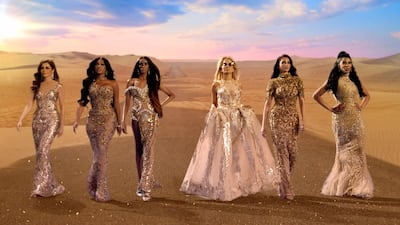
'The Real Housewives of Dubai' will display lavish lifestyles. Photo: Bravo

Nina Ali is one of six businesswomen and socialites starring in 'The Real Housewives Of Dubai', which will be released on Bravo on June 1. Photo: Twitter / @lipstickmommy

Fashion designer Lesa Milan is also part of the cast. Instagram

Entrepreneur Caroline Brooks features in the show, which had a trailer come out two weeks ahead of its release. Photo: @carolinedxb / Instagram

Model Chanel Ayan is part of the cast. Photo: @Chanelayan / Instagram

Former 'Ladies of London' star Caroline Stanbury is in the show. Photo: Instagram

Emirati star Dr Sara Al Madani is part of the cast. Getty Images for Inflow

Phaedra Parks from 'The Real Housewives of Atlanta' features in 'The Real Housewives of Dubai'. Photo: YouTube / Bravo

'The Real Housewives of Dubai' will display lavish lifestyles. Photo: Bravo

Nina Ali is one of six businesswomen and socialites starring in 'The Real Housewives Of Dubai', which will be released on Bravo on June 1. Photo: Twitter / @lipstickmommy

Fashion designer Lesa Milan is also part of the cast. Instagram

Entrepreneur Caroline Brooks features in the show, which had a trailer come out two weeks ahead of its release. Photo: @carolinedxb / Instagram

Model Chanel Ayan is part of the cast. Photo: @Chanelayan / Instagram

Former 'Ladies of London' star Caroline Stanbury is in the show. Photo: Instagram

Emirati star Dr Sara Al Madani is part of the cast. Getty Images for Inflow

Phaedra Parks from 'The Real Housewives of Atlanta' features in 'The Real Housewives of Dubai'. Photo: YouTube / Bravo

'The Real Housewives of Dubai' will display lavish lifestyles. Photo: Bravo
'Real Housewives of Dubai' review: a reality show that doesn't represent real life in UAE
The show started with a disclaimer that it 'does not represent Emirati society as a whole'

Farah Andrews
02 June, 2022
- Listen In English
- Listen In Arabic